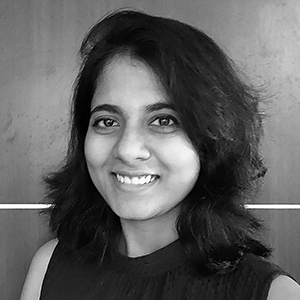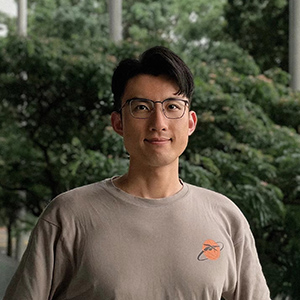NUS-SUTD PhD Symposium in Architecture

QUANTITATIVE RESEARCH ON BUILT ENVIRONMENT
Time: 09:30AM – 12:00 PM
Venue: Seminar Room 04, SDE1 Floor 4
Reviewers: Peter Ortner
BAN LIANG LING
COMPUTATION ARCHITECTURAL DESIGN SEARCH: IMITATING HUMAN DESIGN DECISION-MAKING TO MAXIMISE SOLUTION QUALITY AND DIVERSITY
Abstract: Design search aims to provide designers with diverse yet high-quality options during the early design stage. Numerous approaches, which involve statistical and mathematical methods, facilitate design representation, data manipulation, and visualisation. Aided by increased computing power and rising number of computational tools, design space exploration has grown into a well-established field. In a study on the design space, Woodbury sets out 3 focus areas: designer action, amplification of designer action for exploration, and computational structures to support exploration. Through various examples, he argued that human-computer collaboration can expand a designer’s cognitive range, while a designer’s intuition can provide a qualitative perspective. Data representation is therefore key for a seamless collaboration.
The thesis approaches computation architectural design search with 3 main research questions: 1) How do search strategies imitate human design decision-making? 2) How can computers perform flexible re-representations? and 3) How would an imitation of flexible decision-making lead to improved solution quality and diversity?
Speaker: Ban Liang LING
 |
Ban Liang is a currently a PhD student of Architecture and Sustainable Design at the Singapore University of Technology and Design. Previously, his work at DP Architects Pte Ltd involved running environmental simulations, computational tool development and in-house research collaborations. Ban Liang is also an adjunct lecturer at the Building & Construction Authority Academy, invited to share about computational methods to the industry. He was awarded the Best Thesis Project (Computation) for his SUTD M.Arch thesis on ‘Multi-Objective Climate Optimisation’. His research expands on his experience and interest in computation design, seeking to imbue design intuition into design search processes.
Anjanaa Devi Srikanth
MULTIVARIATE NETWORK SCIENCE-BASED COMPARATIVE ANALYSIS OF SUSTAINABLE INTEGRATED DISTRICTS
Abstract: As many cities increase in density, urban planning and design practices have been adopting more data-driven approaches with the aim of improving all forms of sustainability (economic, environmental, social). In land-scarce Singapore, the vertical intensification of urban spaces is a key dimension of sustainability. The multiple urban levels optimise the limited land resources by distributing multiple public programmes vertically, indicating the emergence of vertical urban developments. The developments are designed to offer elevated social spaces that show similar urban vibrancy as on the ground level. The proximity and diversity of the elevated spaces creates an integrated network that directly influences user activity and thus urban vibrancy. Determining the success of their spatial performance lies in the efficiency of the integrated network, and requires an understanding of pedestrian movement patterns, user activity, and spatial usage in the vertical urban developments. In studying the socio-spatial relationships, my research seeks to compare the spatial performance of multiple integrated urban districts.
The research employs a Network Science-based approach to quantifying a multivariate measure of integration in vertical urban developments. The methodology is validated through the use of empirical studies that corroborate the results of the spatial network analyses. The possible selected case studies for the empirical research are Jurong Gateway (a commercial hub with an extensive network of at-grade and covered elevated pedestrian walkways) and one-north (a vibrant research and business park with a focus on pedestrian connectivity). The research is a part of a larger ongoing study at the Future Cities Lab Global—a research collaboration between ETH Zurich and Singapore universities, including the Singapore University of Technology and Design—that seeks to capture important aspects of the urban planning and design, architectural, social, environmental, economic and governance systems performance of integrated urban districts systematically through work packages led by an interdisciplinary team of architects, engineers, and scientists. In quantifying the performance of vertical urban spatial networks, my research adds a novel approach to the domain of urban spatial assessment and aims to improve the planning and design of future cities.
Speaker: Anjanaa Devi Srikanth
 |
Anjanaa Devi Srikanth is a Ph.D. student of Architecture and Sustainable Design at the Singapore University of Technology and Design (SUTD). She is a Ph.D. Researcher in the Dense and Green Cities module at Future Cities Lab (FCL) Global. Trained as an architect and an urban designer, she is currently working on a Complexity Science-based approach to analyzing spatial performance and connectivity in dense and vertically integrated urban districts in Singapore.
Zhuoshu HE
MEASURING THE DIVERSITY OF URBAN FORM
Abstract: Diversity is one of the most essential values in contemporary urban planning. Diversity has manifold meanings and aspects in different fields. For urban researchers, more-or-less neighborhood level is the main focus and diversity is understood to have physical (uses, design) and social (income, race) dimensions. The field is related to the research cluster termed social mixing or mixed income. Pioneered researchers tended to link physical and social dimensions, but much contradictory evidence exists. Within studies that note physical environment is important for social mixing, there is a lack of detail that allows examining the spatial configuration. Meanwhile, the definition of diversity, especially the technical definition, is often not clarified, which weakens the subsequent description or measurement. The presentation starts from a general discussion on existing definition and measurement of diversity from different research streams. A diversity concept comprising variety, balance and disparity is referred. Then we summarize some takeaways about spatial factors from existing studies about social mixing, most of which are case studies. Following above, we land to the built form, showcase existing studies where our research arise. We close by presenting an attempt of applying existing measures on a few pilot sites.
Bibliography
Bobkova, E., Marcus, L., & Berghauser Pont, M. (2017). Multivariable measures of plot systems: Describing the potential link between urban diversity and spatial form based on the spatial capacity concept. Proceedings of the 11th Space Syntax Symposium. 47.
Galster, G. (2013). Neighborhood social mix: Theory, Evidence, and implications for policy and planning. In N. Carmon & S. S. Fainstein (Eds.), Promoting Justice in Urban Development. University of Pennsylvania Press.
Stirling, A. (2007). A general framework for analysing diversity in science, technology and society. Journal of the Royal Society, Interface, 4(15), 707–719.
Talen, E., & Lee, S. (2018). Design for social diversity (2nd ed.). Routledge.
Speaker: Zhuoshu HE
 |
He Zhuoshu is a PhD student of Architecture at NUS. Zhuoshu obtained his Master of Urban Planning degree from The State University of New York at Buffalo and bachelor’s degree in urban planning from South China University of Technology. His research resides on both urban diversity and quantitative urban form. Zhuoshu is also the Teaching Assistant (Educator Track) of Master of Arts (Urban Design) programme. His working paper was awarded the Best Paper Award in the 13th Conference of International Forum on Urbanism.
Xudong ZHANG
ASSESSMENT OF VISUAL LANDSCAPE QUALITY FOR MENTAL HEALTH PROMOTION
Abstract: Since COVID-19 pandemic imposed negative impacts on human lives, anxiety and depression have increased by 25% worldwide (WHO, 2022). As the urban population faces higher psychological pressure, research on mental health has been increasingly focused on during the past three decades. With empirical evidence having revealed the health benefits from urban green space (UGS), more studies have been investigating the quality of UGS that promote mental health through multiple pathways. Visual landscape quality (VLQ), an attribute of quality directly mirroring human perception, is considered a crucial factor that influences the underlying relationship of perception and use of UGS with mental health. However, how to measure the objective VLQ with proper metrics remains less explored. Besides, research on how VLQ affects mental health through the daily lives of urban residents is inadequate. Cultural ecosystem services provide an important perspective to integrate VLQ, health-promoting pathways and mental health into a holistic assessment framework. The mechanism of how VLQ affect people’s daily perception and use of UGS will help governors and designers to create urban environments with higher health benefits in high-density cities.
Speaker: Xudong ZHANG
 |
Zhang Xudong is a current Ph.D. student in the Department of Architecture, National University of Singapore. He completed his master’s degree at Delft University of Technology in the Netherlands holding a Sino-Dutch Scholarship (2017-2019) awarded by the governments of China and the Netherlands. His study focuses on the visual landscape quality of neighbourhood green spaces for mental health promotion. He is currently working for projects on visual landscape quality assessment and on urban ecosystem services in residential neighbourhoods under Urban Greenery Lab in NUS.
Yihan ZHU
UNDERSTANDING USERS’ PERSPECTIVE ON URBAN PUBLIC SPACE: TOWARDS MACHINE LEARNING APPROACHES
Abstract: With the trend towards people-centred urban development, the evaluation of urban public space from the user’s perspective has become a valued topic. However, there is no widely acknowledged definition or research scope on this notion, nor is there a systematic literature review. Meanwhile, in the background of the broad application of machine learning (ML), the usage and trends of ML in this topic is also unexplored but worth studying. This literature review summarises the definition and 10 dimensions of the users’ perspective on UPS, and analysed ML applications on this topic and their advantages and disadvantages by synthesising 290 relevant papers. This review suggests that the main future research opportunities are: (1) the ML application in the climate comfortability, university, perceived accessibility and feeling towards management dimensions; (2) adaptation of the current ML methods to the UPS studies; (3) utilisation of ML prediction in this topic; (4) development of more suitable training data-set.
Speaker: Yihan ZHU
 |
Zhu Yihan is a PhD student of Architecture at NUS. Yihan obtained his Master of Arts (Urban Design) degree from NUS and Bachelor of Engineering degree major in Urban Planning from Sun Yat-Sen University. After four years of practice as an urban designer in Singapore, he starts his research exploring the design and management of urban public space.